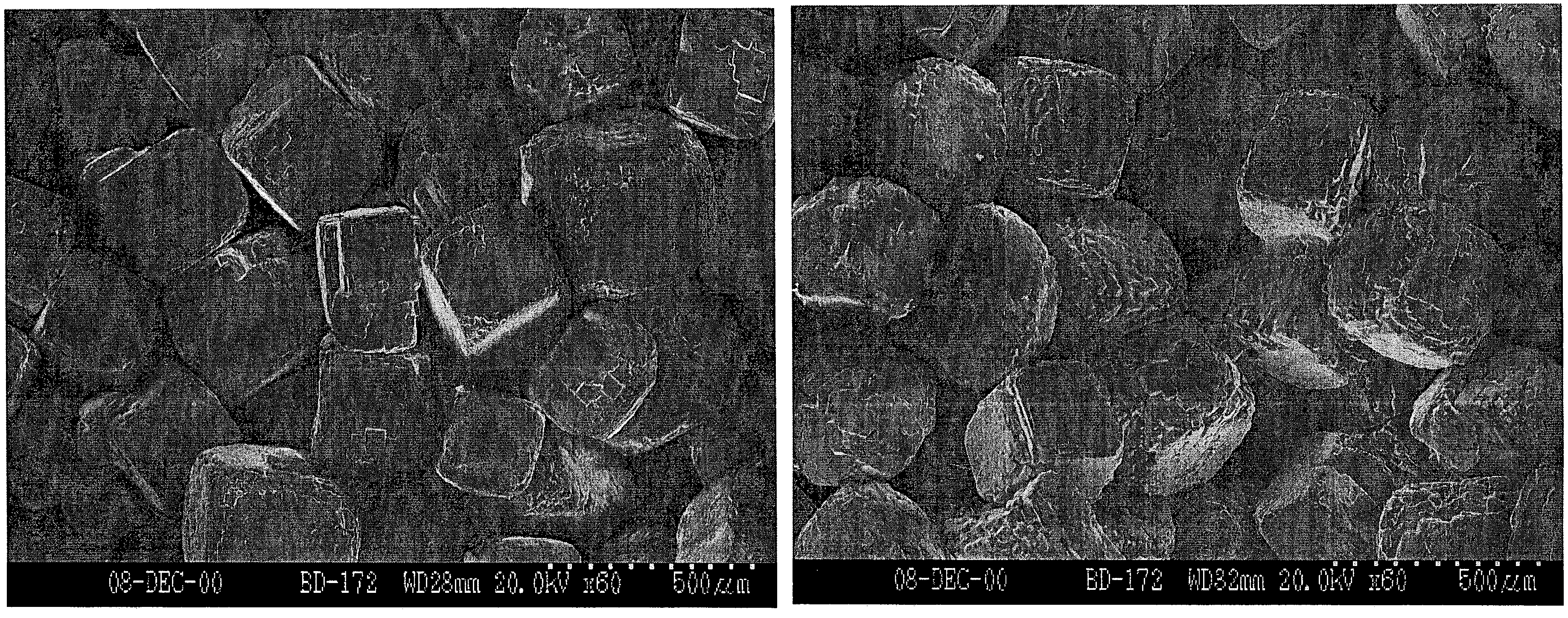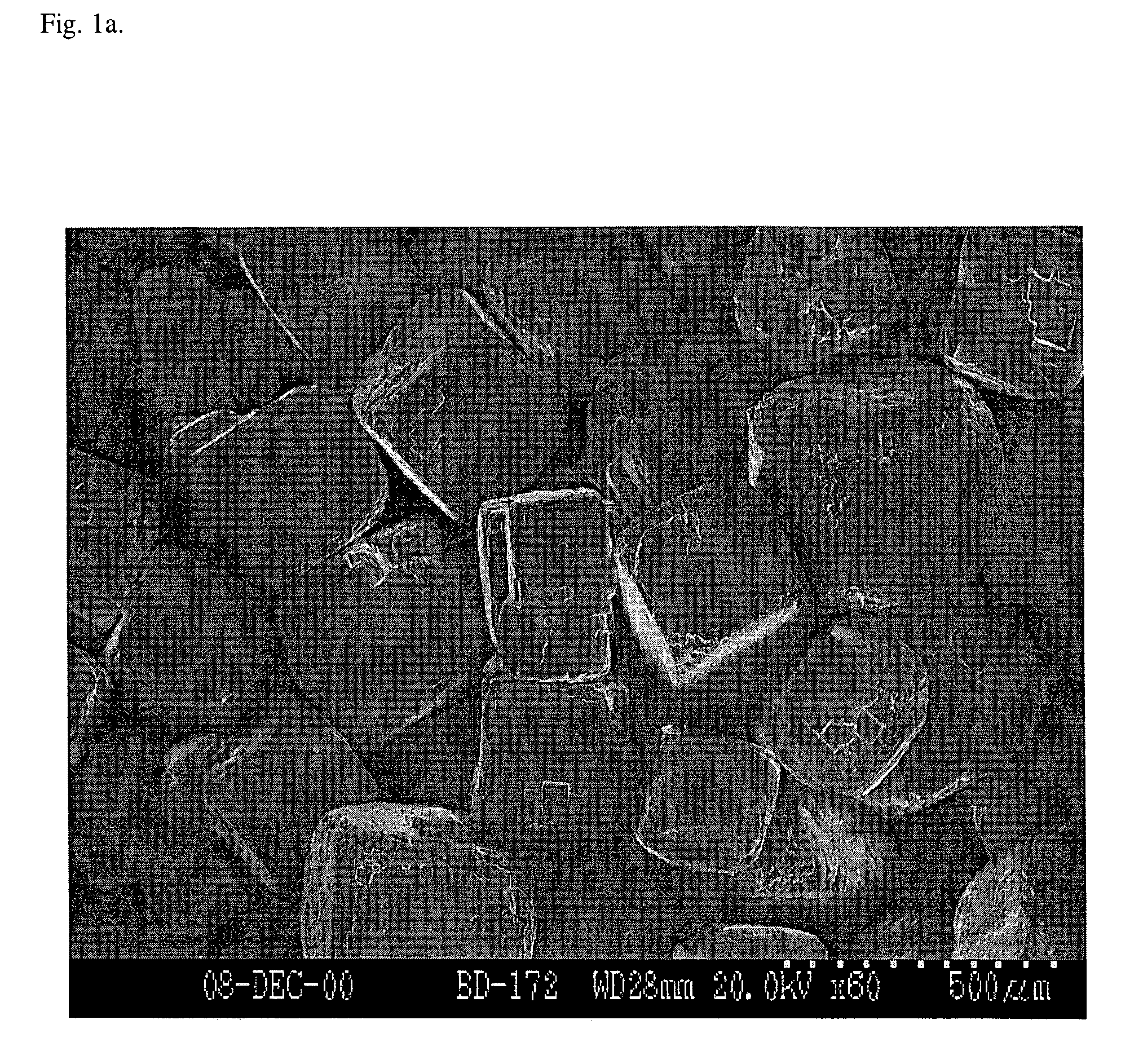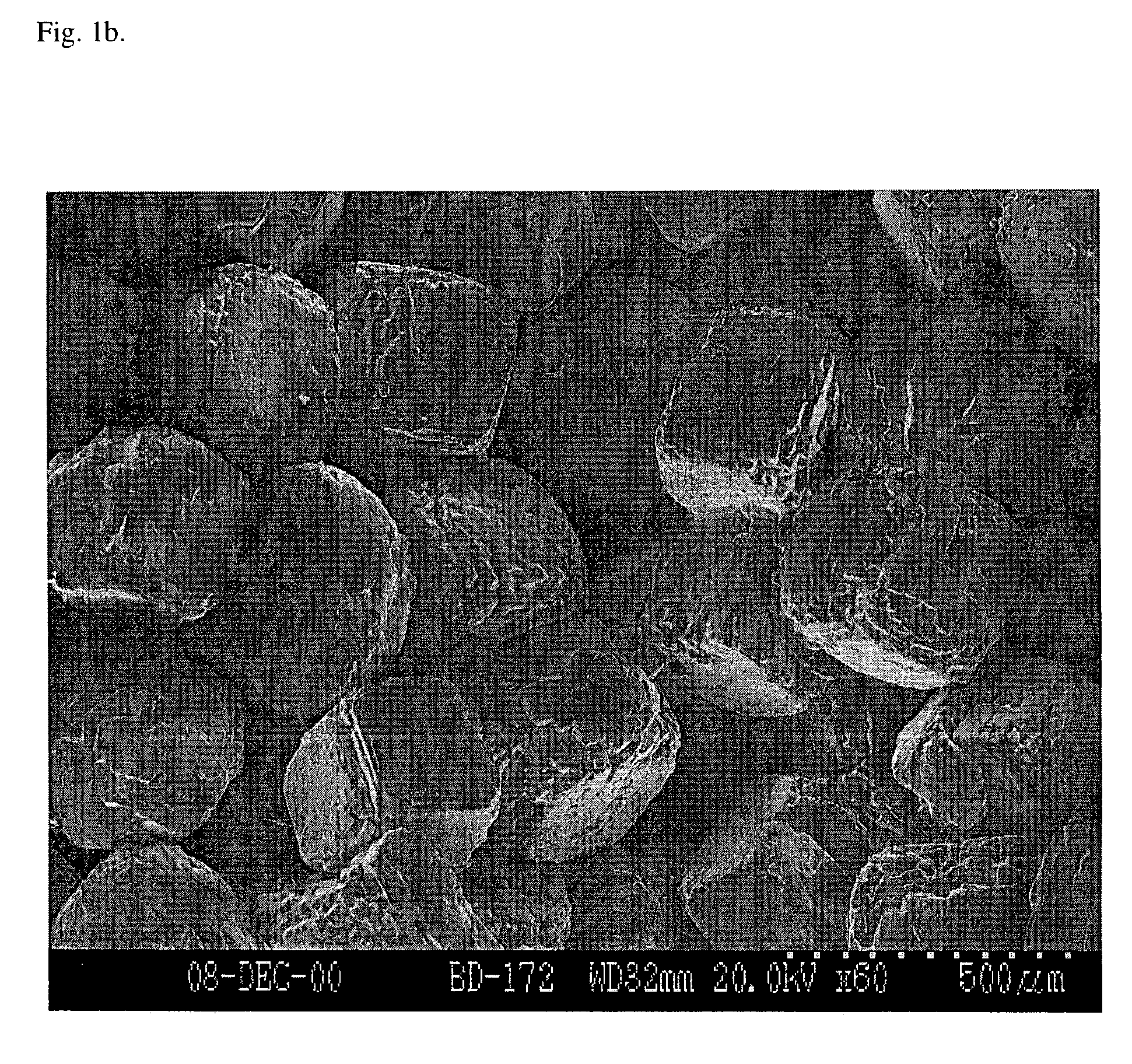Tissue engineering scaffolds
a technology of tissue engineering and scaffolds, applied in the field of tissue engineering scaffolds, can solve the problems and achieve the effect of limited ability of cells to interact and organize themselves into functioning tissues
- Summary
- Abstract
- Description
- Claims
- Application Information
AI Technical Summary
Benefits of technology
Problems solved by technology
Method used
Image
Examples
example 1
[0087]In this example, NaCl frames and biodegradable polymer scaffolds are produced. The salt particles (Mallinkrodt, Paris, Ky.) were sieved to yield a range of sizes. NaCl crystals of a diameter of about 250-425 μm were used.
[0088]Porous scaffolds were prepared either by solvent casting / particulate leaching, or gas foaming / particulate leaching processes using NaCl as the particulate porogen. The solvent cast scaffolds were prepared essentially as described by Mikos, A. G., et al. (“Preparation and characterization of poly(L-lactic acid) foams”Polymer 35:1068, 1994; which is incorporated herein by reference). NaCl molds were made by subjecting NaCl crystals (diameter of about 250-425 μm) to 95% humidity for periods from 0-24 hr to achieve fusion of NaCl crystals prior to solvent casting. A closed, water-jacketed cell culture incubator (Forma Scientific, Inc.) held at 37° C. was used to create a 95% humidity environment for fusion of NaCl crystals.
[0089]Poly(lactide-co-glycolide) (P...
example 2
[0092]In this example, the scaffolds are characterized. Incubation of NaCl crystals in 95% humidity resulted in fusion of the crystals, creating a highly interconnected NaCl matrix (FIG. 1a-b). Fused salt molds were bisected and imaged prior to solvent casting to observe the extent of NaCl crystal fusion. In addition, polymer scaffolds were bisected after preparation via freeze fracture. A carbon coating was evaporated onto the surface of each bisected salt mold and polymer scaffold, and samples were imaged under high vacuum using a Hitachi S-3200N SEM operating at 20-30 kV. Fusion of salt crystals prior to addition of PLG in chloroform (solvent casting) resulted in enhanced pore interconnectivity within the scaffold. The pore structure within the scaffolds (FIG. 2) appears similar to the structure of the fused salt matrix (FIG. 1a-b), as expected. Pores within the cross section of 1 hr salt fusion (SF) samples display a defined pore structure with intermittent holes in pore walls, ...
example 3
[0096]In this example, the scaffolds of the present invention are use for the culture of cells. The scaffold is sterilized by gamma radiation, ethylene oxide or cold sterilants. Cells are seeded on to the scaffold in an appropriate culture medium with any necessary growth factors, if needed. Cell culture media may be replaced by batch feeding or by perfusion methods. Sterility is maintained at all times.
PUM
| Property | Measurement | Unit |
|---|---|---|
| humidity | aaaaa | aaaaa |
| humidity | aaaaa | aaaaa |
| humidity | aaaaa | aaaaa |
Abstract
Description
Claims
Application Information
 Login to View More
Login to View More - R&D
- Intellectual Property
- Life Sciences
- Materials
- Tech Scout
- Unparalleled Data Quality
- Higher Quality Content
- 60% Fewer Hallucinations
Browse by: Latest US Patents, China's latest patents, Technical Efficacy Thesaurus, Application Domain, Technology Topic, Popular Technical Reports.
© 2025 PatSnap. All rights reserved.Legal|Privacy policy|Modern Slavery Act Transparency Statement|Sitemap|About US| Contact US: help@patsnap.com



